
细胞增殖(英文)(Cell Proliferation)(国际刊号) 知网目次
- 高T3
- 主管单位:
- 主办单位:
中国细胞生物学学会干细胞分会
- 国际刊号:
1365-2184
- 国内刊号:
- 学科分类:
- 字数:
-
- 有无基金:
- 周期:
国际号刊-月刊
- 特殊属性:
外文期刊
- 电话:
- 邮箱:
CPReditorialoffice@wiley.com(官网邮箱)
- 复合因子:
0
- 综合因子:
0
- 收录:
知网目次
- 级别:
高T3
期刊简介
《细胞增殖》期刊已被查看: 次
更新频次
单位占比
一作占比
投稿指南
1、该刊只有国际刊号!
2、投稿方式:在线投稿。
3、官网网址:
https://onlinelibrary.wiley.com/journal/13652184
4、投稿系统:
http://mc.manuscriptcentral.com/cellprolif
5、出刊日期:月刊,一年出版12期。
2023年9月13星期三
《细胞增殖(英文)》(Cell Proliferation)期刊简介
Cell Proliferation 是癌症和干细胞研究领域的国际期刊,发表干细胞、细胞衰老、再生医学、细胞死亡、组织工程等与细胞增殖和分化相关的重要研究成果。
自2017年起,由周琪院士担任主编。2019年,中国细胞生物学学会干细胞分会与出版商Wiley达成长期战略合作,Cell Proliferation 成为干细胞分会旗舰刊物。其秘书处位于中国科学院干细胞与再生医学创新研究院/北京干细胞与再生医学研究院。
纵深广阔的研究主题
Cell Proliferation 研究主题较为丰富,涉及干细胞、再生医学、组织工程、细胞周期控制、细胞衰老、细胞死亡和数学建模等内容。
文章类型包括研究论文及综述,涵盖干细胞治疗新型冠状病毒肺炎、神经退行性疾病、心脑血管疾病、生殖障碍、代谢紊乱、自身免疫疾病、基因遗传病和癌症的最新成果,包括但不限于:
1. 多能干细胞及其衍生物治疗重大疾病的临床应用
2. 间充质干细胞和成体干细胞治疗重大疾病的临床应用
3. 细胞治疗用药物、材料、设备及辅剂
4. 重大疾病细胞治疗的监管政策与临床标准
《细胞增殖(英文)》(Cell Proliferation)作者指南
【官网信息】
Author Guidelines
1. SUBMISSION
Thank you for your interest in Cell Proliferation. Note that submission implies that the content has not been published or submitted for publication elsewhere except as a brief abstract in the proceedings of a scientific meeting on symposium.
Once you have prepared your submission in accordance with the Guidelines, manuscripts should be submitted online at https://mc.manuscriptcentral.com/cellprolif
The submission system will prompt you to use an ORCID iD (a unique author identifier) to help distinguish your work from that of other researchers. Click here to find out more.
Click here for more details on how to use ScholarOne.
For help with submissions, please contact: CPReditorialoffice@wiley.com
We look forward to your submission.
Data Protection and Privacy
By submitting a manuscript to, or reviewing for, this publication, your name, email address, institutional affiliation, and other contact details the publication might require, will be used for the regular operations of the publication, including, when necessary, sharing with the publisher (Wiley) and partners for production and publication. The publication and the publisher recognize the importance of protecting the personal information collected from users in the operation of these services, and have practices in place to ensure that steps are taken to maintain the security, integrity, and privacy of the personal data collected and processed. You can learn more at https://authorservices.wiley.com/statements/data-protection-policy.html.
Preprint Policy
Cell Proliferation accepts articles previously published on preprint servers. It also considers for review articles previously available as preprints. You may also post the submitted version of a manuscript to a preprint server at any time. You are requested to update any pre-publication versions with a link to the final published article.
Please find the Wiley preprint policy here.
2. AIMS AND SCOPE
Cell Proliferation is is a journal devoted to studies into all aspects of cell proliferation and differentiation in normal and abnormal states; control systems and mechanisms operating at inter- and intracellular, molecular and genetic levels; modification by and interactions with chemical and physical agents; mathematical modelling; and the development of new techniques. In addition to original research papers Cell Proliferation publishes invited review articles, book reviews and letters commenting on previously published papers and/or topics of general interest.
Cell Proliferation is your complete reference for research relating to: stem cells, regenerative medicine, tissue engineering, cell cycle control, cell senescence, cell death and mathematical modelling. This journal is considered essential reading for those involved in cancer research and stem cell research. It is devoted to the study of cell proliferation and differentiation in normal and abnormal states – covering such aspects as; the construction of models for reaction mechanisms, and the study of microenvironmental factors on reaction rates, including work on new developments in techniques and the mathematical interpretation of data. The readership consists of professional research workers in the fields of experimental biology and oncology.
3. MANUSCRIPT CATEGORIES AND REQUIREMENTS
Cell Proliferation publishes a number of different article types including:
Original Articles
Original articles should contain reports of new research findings or conceptual analyses that make a significant contribution to knowledge. Original articles should be no more than 4,000 words, excluding references.
Reviews
Reviews should be critical reviews of the literature, including systematic reviews and meta-analyses and should not exceed 6,000 words, excluding references.
Editorials
Editorials are usually commissioned but unsolicited material may be considered. Please approach the Editorial Office (CPReditorialoffice@wiley.com) before submitting this material. Editorials have a limit of 1,000 words.
Letters to the Editor
Letters to the Editor are welcomed and should not exceed 1,000 words. This type of manuscript is not liable for Article Publication Charges.
4. PREPARING YOUR SUBMISSION
Manuscripts must be submitted as a Word or rtf file and should be written in English. The manuscript should be submitted in separate files: main text file; figures.
Text File
The text file should be presented in the following order:
(i) Title; (ii) a short running title of less than 40 characters; (iii) the full names of the authors; (iv) the author's institutional affiliations at which the work was carried out, (footnote for author’s present address if different to where the work was carried out); (v) acknowledgements; (vi) abstract, (vii) main text, (viii) references, (ix) tables (each table complete with title and footnotes) (x) figure legends, (xi) appendices (if relevant). Figures and supporting information should be supplied as separate files.
Title
The title should be a short informative title that contains the major key words. The title should not contain abbreviations (see Wiley's best practice SEO tips).
Authorship
Please refer to the journal’s authorship policy in the Editorial Policies and Ethical Considerations section for details on eligibility for author listing.
Acknowledgements
Contributions from anyone who does not meet the criteria for authorship should be listed, with permission from the contributor, in an Acknowledgements section. Financial and material support should also be mentioned. Thanks to anonymous reviewers are not appropriate. Please also specify the contributions each author made to the manuscript (e.g. Study design: Author A’s initials, Author B’s initials; Data Collection & Analysis: Author A, B, and C’s initials). Contributions can fall under several headings and the above example is by no means exhaustive - headings could include: Study design; Data collection; Contribution of new reagents or analytical tools; Data analysis; Manuscript preparation etc.
Conflict of Interest Statement
You will be asked to disclose conflicts of interest during the submission process. See the section ‘Conflict of Interest’ in the Editorial Policies and Ethical Considerations section for details on what to include in this section. Please ensure that you liaise with all co-authors to confirm agreement with the final statement. The Conflict of Interest statement should be included within the main text file of your submission.
When editor-in-chief (EIC) of the journal is an author of a paper submitted to that journal, the Editor-in-Chief will be blinded to the peer review process. An Associate Editor will provide peer review oversight and decision making with no bias.
Abstract
For original manuscripts, the abstract should be structured as follows: Objectives; Materials and Methods; Results; Conclusions.
Reviews require an unstructured abstract.
Main Text
For original articles, the main text should be structured as follows: Abstract; Introduction; Materials and Methods; Results; Discussion; Acknowledgements; Conflict of Interest Statement; References.
For reviews, the main text should be structured as follows: Abstract; Introduction; Content-appropriate headings; References.
References
All references should be numbered consecutively in order of appearance and should be as complete as possible. In text citations should cite references in consecutive order using Arabic superscript numerals. For more information about AMA reference style please see the AMA Manual of Style
Sample references follow:
Journal article
1. King VM, Armstrong DM, Apps R, Trott JR. Numerical aspects of pontine, lateral reticular, and inferior olivary projections to two paravermal cortical zones of the cat cerebellum. J Comp Neurol 1998: 390:537-551.
Book
2. Voet D, Voet JG. Biochemistry. New York: John Wiley & Sons; 1990. 1223 p.
Please note that journal title abbreviations should conform to the practices of Chemical Abstracts.
Internet Document
9. American Cancer Society. Cancer Facts & Figures 2003.http://www.cancer.org/downloads/STT/CAFF2003PWSecured.pdf Accessed March 3, 2003.
Tables
Tables should be self-contained and complement, but not duplicate, information contained in the text. They should be supplied as editable files, not pasted as images. Legends should be concise but comprehensive – the table, legend and footnotes must be understandable without reference to the text. All abbreviations must be defined in footnotes. Footnote symbols: †, ‡, §, ¶, should be used (in that order) and *, **, *** should be reserved for P-values. Statistical measures such as SD or SEM should be identified in the headings.
Figure Legends
Legends should be concise but comprehensive – the figure and its legend must be understandable without reference to the text. Include definitions of any symbols used and define/explain all abbreviations and units of measurement.
Preparing Figures
Although we encourage authors to send us the highest-quality figures possible, for peer-review purposes we are happy to accept a wide variety of formats, sizes, and resolutions. Click here for the basic figure requirements for figures submitted with manuscripts for initial peer review, as well as the more detailed post-acceptance figure requirements.
……
更多详情:
https://onlinelibrary.wiley.com/page/journal/13652184/homepage/forauthors.html
上一篇:复杂系统建模与仿真(英文)(Complex System Modeling and Simulation)下一篇:表面科学技术(英文)(Surface Science and Technology)(OA期刊)(不收版面费审稿费)
《细胞增殖》同类生物科学期刊
-
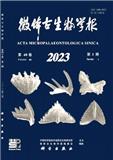
微体古生物学报
北核,CSCD,科核,高T2
CN中文-季刊影响因子0.718
-
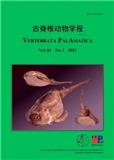
古脊椎动物学报(中英文)
北核,CSCD,科核,高T1
CN中文-季刊影响因子0.7
-

植物科学学报(原:武汉植物学研究)
北核,CSCD,科核,武A-
CN中文-双月刊影响因子1.589
-
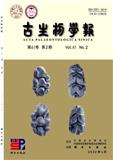
古生物学报
北核,CSCD,科核,高T1,武B+
CN中文-季刊影响因子0.83
-
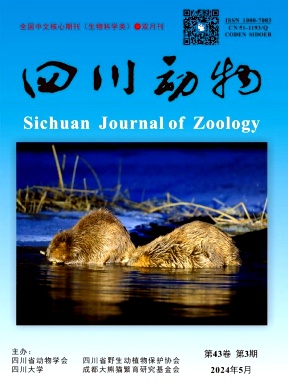
四川动物
北核,科核
CN中文-双月刊影响因子1.24
-
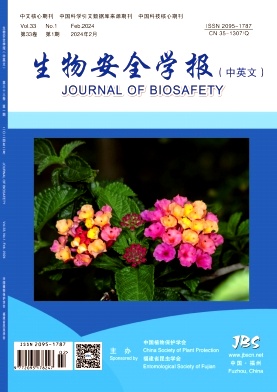
生物安全学报(中英文)(原:华东昆虫学报)
北核,科核,CSCD扩
CN中文-季刊影响因子1.247
-
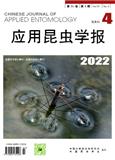
应用昆虫学报(原:昆虫知识)
北核,CSCD,科核,武A
CN中文-双月刊影响因子1.836
-
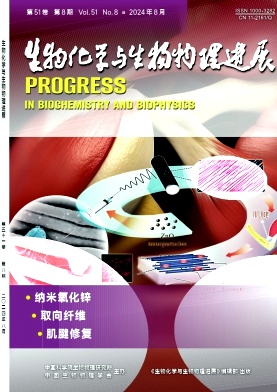
生物化学与生物物理进展
北核,CSCD,科核,武A-
CN中文-月刊影响因子1.167
常见问题
-
细胞增殖杂志社官网、联系方式是什么?
细胞增殖杂志社官网:https://onlinelibrary.wiley.com/journal/13652184
投稿网址:http://mc.manuscriptcentral.com/cellprolif
投稿邮箱:CPReditorialoffice@wiley.com(官网邮箱) -
细胞增殖杂志是核心期刊么?
细胞增殖不是核心期刊,级别是:高T3, 是:生物科学分类下的知网目次收录的期刊。
-
请问你们是细胞增殖杂志社吗?
我们不是《细胞增殖》杂志社。本站主要从事期刊信息展示与期刊推荐,不是任何杂志官网,直投稿件请联系杂志社。本站仅提供免费的学术指导、论文辅导、期刊投稿信息整理收集服务。
-
你们指导服务后可以保证文章被发表吗?
期刊发表的成功与否,主要取决于文章内容的质量。编辑老师会根据研究领域、创新性等多因素进行考量。我们会帮助您理解期刊的发表要求,助力提升发表几率,从而增加发表的机会。
-
晋级论文能否在报纸上发表?
在学术界,论文的发表往往被视为研究者职业发展的重要一环。晋级论文,即为了获得更高职称或学术地位而撰写的学术论文,通常需在专业期刊上发表。然而,许多人可能会问
